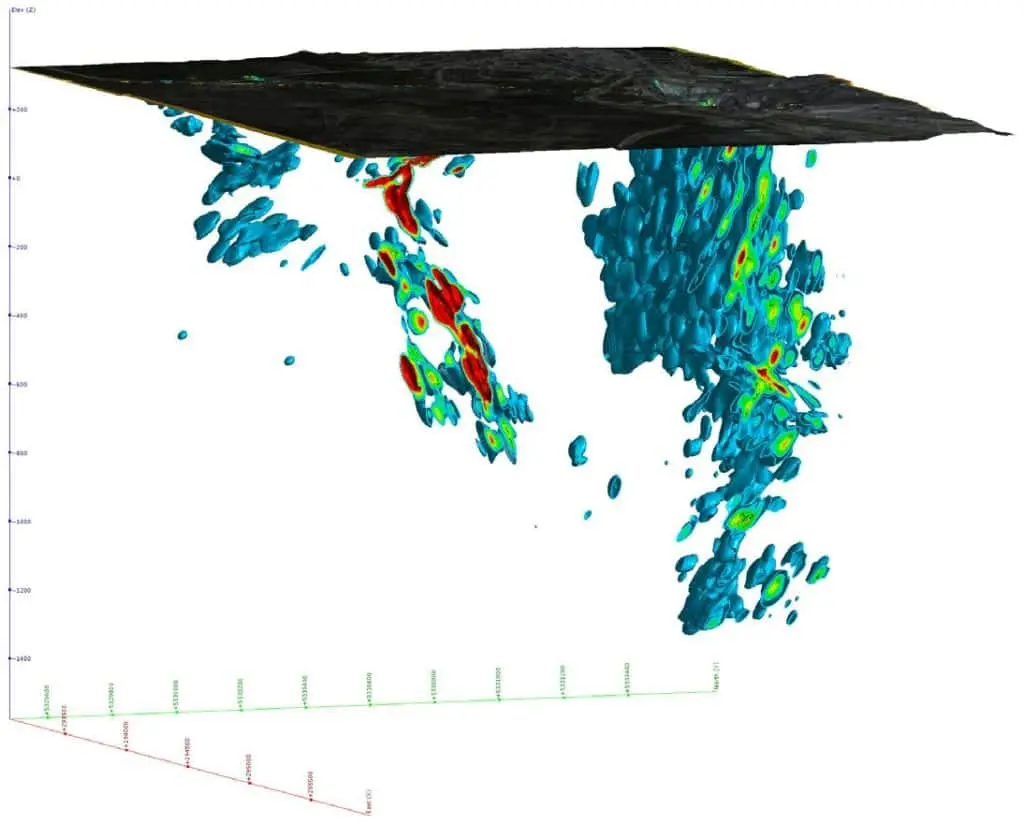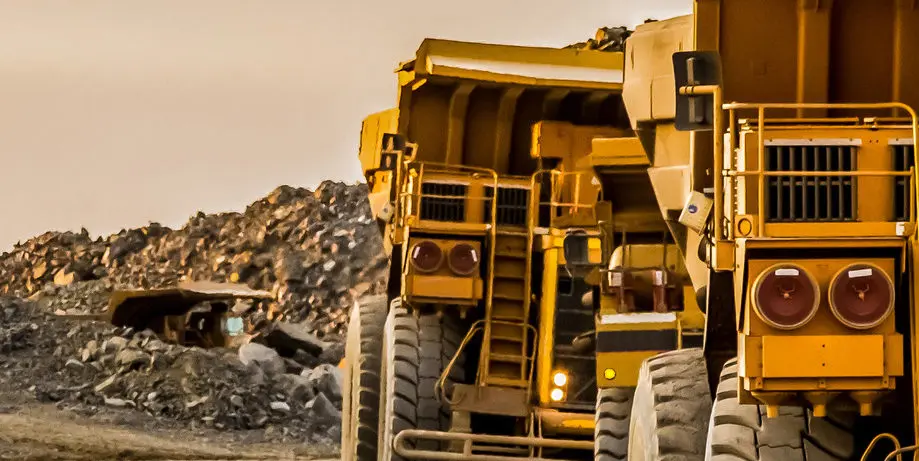The Integra Gold Rush Challenge has been described as comprising one of the largest open-sourced digital mining databases. It included over 30,000 historic drill holes, more than 500,000 gold assays, and detailed plans of hundreds of kilometres of underground workings dating back to 1934. How did Leapfrog’s FastRBF™ engine help competitors deal with such a massive challenge? And how does this pave the way to meet the increasing demands from big data?
In September 2015 Integra Gold Corp launched the Integra Gold Rush Challenge, a crowdsourcing competition inviting participants to help uncover the next big gold discovery at Integra’s Lamaque property in Val-d’Or, Quebec. Competitors were given access to over six terabytes of digital mining and exploration data collected from over 70 years of mining and exploration at the Sigma and Lamaque gold mines.
Integra chose Leapfrog, pioneer of implicit modelling, as the official 3D modelling partner. Leapfrog’s Managing Director, Shaun Maloney says, “One of the reasons we were so keen to get involved was the opportunity to demonstrate how Leapfrog can easily handle such massive datasets.”
Leapfrog’s powerful FastRBF engine is able to deal with data sets of well over a million points. Interpolation can be completed efficiently on a standard PC, making it accessible to a wide range of users.
Leapfrog Gold Rush licenses
To make it a fair challenge, Seequent, the developers of Leapfrog, offered all Gold Rush competitors free access to Leapfrog for the duration of the challenge. The C$1 million (US$764,568) in prize money enticed over 1,300 participants to register, including 95 teams, and more than 100 individual submissions. Although it wasn’t mandatory for competitors to use Leapfrog, over 700 registered for Leapfrog GoldRush licences and four of the five finalists used Leapfrog as part of their entry.
Intuitive and easy to learn, Leapfrog provided a viable option for those competitors who were first time users. Leapfrog’s ‘Getting Started’ videos and Online Help were available to allow competitors to make the most of the software.
The Data Miners team, placed second, commented they found Leapfrog “very easy to use, very intuitive and really good given the tight schedule.” The second, third, fourth and fifth-placed teams all used Leapfrog as part of their competition entry
Handing vast amounts of data
As there was such a large bank of data to sift through, the competition provided an ideal opportunity to test Leapfrog’s capability.
Antoine Caté, from Data Miners, was building some incredibly complex and detailed geological models and found that although Leapfrog took some time to process all the data, “it did not crash, it was really impressive.”
“This was particularly important as we are students and don’t have super computers,” added Antoine.
Leapfrog is also able to import a variety of different types of data, such as GIS and geophysics data that Paul Pearson, of Latin Global Structural Geology, found hugely beneficial. Paul used the strategy of modelling on a coarse surface resolution at first, to understand the essence of what was going on. He then refined the resolution when making the final models. “In the end the software did everything I demanded of it,” said Paul.
Use of Leapfrog
Levels of Leapfrog usage varied, with some using it extensively and others, such as The Goldcrushers and GoldRX, mainly using it for vetting targets, visualisation of data and screening to see if it was of good quality.
Data Miners and Paul Pearson both used Leapfrog to develop a 3D model, with Paul feeling his complex and realistic 3D model was probably as ‘true to life’ as the data permitted.
Data Miners found the ability to produce different types of interpolants for calculations particularly useful. Paul Pearson found the buffering and Boolean operation capabilities great for formulating ideas on mineralisation controls.
Paul commented, “It became obvious very early on that the Sigma-Lamaque property was sliced up by numerous faults, so being able to model these fault block volumes on an individual basis was very important to me. It took a while to figure out how to effectively model each block but in the end it was productive.”
The Goldcrushers enjoyed Leapfrog’s facility to display, visualise and filter and “its fantastic capability to show sections and views to see through the forest of data.” They also found it very helpful at importing targets and comparing against assay and drilling.
GoldRX liked Leapfrog’s responsiveness. Team captain Craig Hart commented, “We were able to see relationships, patterns and trends, so we could rapidly make decisions.”
Overall, everyone’s experience of the Challenge was positive, enjoyable and professionally worthwhile. Competitors appreciated having access to a world class deposit, a huge system by global standards.
Hypothesizing
One of Leapfrog’s strengths is the ability to consider a number of hypotheses with relative ease. The Leapfrog team asked competitors to give us some insight into how many iterations they developed before deciding on a final model.
Some felt that the timescales meant they weren’t able to easily consider multiple hypotheses. Data Miners developed a single model and having proved it, developed it into the final one, while GoldRX carried out a lot of small scale hypothesising, using Leapfrog as a continuum for decision-making.
Conversely, Paul Pearson lost count of the number of hypotheses he came up with. “Early on I was investigating the influence of early fold and shear structures on the localisation of the gold, but later came around to recognising also how the late kink structures and intrusive contact geometries must have been channeling fluid flow and gold mineralisation upwards and outwards from the major shear zones.” Paul appreciated being able to update different iterations easily and Leapfrog’s ability to let users modify workflow structure accordingly and see what you have and haven’t done to get there.
Defining Targets
Integra encouraged competitors to be innovative and imaginative with their entry and in defining targets.
Data Miners tried to use the full potential of the Leapfrog model and were able to produce a very detailed model, even where the data density was not that high. “We were able to create exploration vectors, variables in space and export into machine learning. The model was backed by sound geology but we were able to use artificial intelligence that has not much been used in the exploration industry.”
The Goldcrushers concept was to look outside the area of greatest data density. They felt there would be very little potential for finding a yet unknown deposit in the main mining area simply because the volume of rock not tested by drilling or exposed by mine infrastructure is too small for hosting a new multi-million-ounce gold discovery. Even though their main focus was on the outer fringes, they found Leapfrog very valuable for identifying and defining smaller but potentially high-value in-mine targets.

Paul Pearson’s targets were based on identifying the conceptual fluid flow paths or conduits identified in the Lamaque mineralisation model, using the solid geology model. “The vast amount of data in mature projects like these means that geoscientists always have to seek the fine balance between seeing the detail and at the same time appreciating the overall picture.”
Managing Director Shaun Maloney says, “We know that the drill targets identified have blown Integra away and they have expedited their drilling program to test them.”
Conclusion
It’s now possible to obtain information from every piece of equipment in a mine. This digital capture of data also gives the decision makers the opportunity to access information in real time. Packages like Leapfrog that can nimbly handle this proliferation of data will be best placed to meet future needs and enable the best use of information to increase efficiency and reduce risk.
Leapfrog’s advanced implicit modelling engine, FastRBF remains unrivalled.
In conclusion Shaun Maloney says, “Big data analytics will transform the mining industry going forward. Leapfrog’s powerful capability sets it apart from other geological modelling software. Because creating a model is now easier, more time is available to spend on understanding the geology and studying more complex details such as faulting, stratigraphic sequences,
trends and veins. The model can be developed to reflect reality to a greater degree of precision than was previously possible. We are so pleased we were chosen as the Official 3D modelling partner for the Integra Gold Rush Challenge.”
